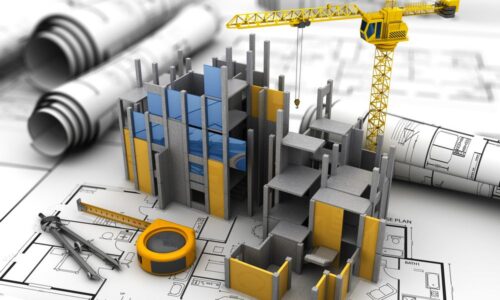In the construction industry, every project starts with a crucial question: How much material is needed to get the job done? The answer lies in Construction Material Takeoff, an essential process that determines the quantities of materials required for a project. Without an accurate takeoff, the project risks running over budget, facing delays, and even dealing with material shortages or surpluses.
This blog dives into the importance of material takeoff, explains the process, highlights the latest tools, and discusses why precision in this phase is vital for project success.
What is Construction Material Takeoff?
Construction Material Takeoff is a detailed process of calculating the quantities of materials required for a project. It involves analyzing the project’s blueprints, designs, and specifications to extract precise measurements. These measurements are then converted into estimates of materials such as concrete, timber, steel, drywall, and electrical components.
Accurate material takeoff ensures that you order just the right amount of materials—no more, no less—allowing for better project control and cost management. It’s an essential step that influences not only the project’s budget but also its timeline and overall efficiency.
Why is Material Takeoff Essential?
Cost Savings: With an accurate material takeoff, you avoid over-ordering materials, which can lead to unnecessary costs. Additionally, it prevents the risk of under-ordering, which can delay the project due to insufficient materials.
Time Efficiency: Proper material estimation ensures that materials are delivered on time and in the right quantities, allowing construction teams to work without interruptions. This is critical in maintaining project schedules.
Waste Reduction: By ordering just the right amount of materials, takeoff helps reduce waste on construction sites. This not only cuts disposal costs but also supports sustainability by minimizing the environmental impact of the project.
Improved Budgeting: For contractors, an accurate material takeoff is essential for creating realistic bids and estimates. It helps ensure that you’re not only competitive but also safeguarding your profit margins.
The Construction Material Takeoff Process
The takeoff process is meticulous and requires attention to detail. Here’s a step-by-step breakdown of how construction professionals handle material takeoff:
Analyzing Project Drawings
The process begins with a thorough review of the project’s blueprints and drawings. These documents provide a detailed view of the construction plans, including the dimensions, structure, and materials required for each component. Whether it’s a residential home or a large commercial building, every detail matters.
Identifying Materials to be Quantified
Once the drawings are reviewed, the next step is to identify all the materials that need to be quantified. This includes everything from concrete for the foundation to steel for the structural framework and finishing materials such as tiles and paint. Each material type needs to be calculated individually.
Measuring Quantities
This is where the core of the takeoff process happens. By using either manual methods (such as scaling off printed drawings) or digital tools (like Bluebeam Revu or PlanSwift), the quantity surveyor measures the length, area, volume, or count of each material required. For instance, the total area of drywall needed for a building’s interior walls will be calculated based on the square footage of the walls.
Converting Measurements into Material Quantities
The measurements are then converted into material quantities. For example, the length of a wall will be used to calculate the amount of timber or drywall needed, and the area of a floor will help estimate the amount of concrete or tile required.
Cross-Checking Accuracy
Accuracy is crucial in material takeoff. Before finalizing the takeoff, the measurements are cross-checked with the project specifications and drawings to ensure that nothing has been missed. Any miscalculation at this stage can lead to significant issues later in the project.
Common Challenges in Material Takeoff
While material takeoff is a vital part of the construction process, it comes with its own set of challenges:
Complexity of Projects: As construction projects become more complex, so does the takeoff process. Larger, multi-phase projects with intricate designs require more detailed and accurate material calculations.
Inaccurate or Incomplete Drawings: If the project drawings are not accurate or up to date, it can lead to errors in the takeoff process. It’s essential to work with the latest, most complete versions of the drawings to ensure accuracy.
Human Error: Manual takeoff is prone to errors, especially when dealing with large or complex projects. Even a small mistake in scaling or calculating can lead to significant material shortages or overages.
Project Scope Changes: As construction projects progress, changes in scope are not uncommon. When this happens, the takeoff needs to be revisited and adjusted to account for the new requirements.
Tools for Construction Material Takeoff
Thankfully, modern technology has streamlined the material takeoff process, making it faster and more accurate than ever before. Here are some of the most popular tools used by construction professionals today:
Bluebeam Revu
Bluebeam Revu is one of the most widely used digital tools for material takeoff. It allows users to mark up PDFs of project drawings and measure materials directly from digital blueprints. The software makes the process more efficient and reduces the risk of human error.
PlanSwift
PlanSwift is another popular tool that helps construction professionals measure and estimate material quantities. It features an easy-to-use interface, making it accessible for both small and large projects. PlanSwift is especially useful for creating quick, accurate estimates during the bidding process.
Kubla Cubed
Kubla Cubed is a specialized tool for earthworks and excavation takeoffs. It’s perfect for civil engineering projects where calculating soil volumes, cut and fill quantities, and other earthwork measurements are necessary.
Excel
While digital tools are becoming the standard, many quantity surveyors and contractors still use Excel spreadsheets for calculating and finalizing material estimates. Excel’s flexibility allows users to customize their calculations and reports, making it a great tool for managing large sets of data.
How Measure Manage Can Help with Material Takeoff
At Measure Manage, we provide expert Material Takeoff Services for all types of construction projects, from residential homes to large-scale commercial developments. Here’s why you should trust us with your material takeoff needs:
Expertise Across All Project Types: Our team has years of experience handling takeoffs for projects of all sizes. Whether you’re building a new home or working on a major infrastructure project, we can provide accurate and efficient material estimates.
Advanced Technology: We use cutting-edge tools like Bluebeam Revu and PlanSwift to ensure that every takeoff is accurate and delivered on time. Our digital approach minimizes errors and provides detailed, easy-to-understand reports.
Commitment to Quality: As members of the Royal Institute of Chartered Surveyors (RICS) and the Australian Institute of Quantity Surveyors (AIQS), we adhere to the highest industry standards. You can trust us to provide reliable, professional service every time.
Why Accurate Material Takeoff is Key to Project Success
In the construction industry, success depends on careful planning and execution. Material takeoff is one of the most critical phases of project planning, and it sets the foundation for everything that follows. By ensuring that you have accurate material estimates, you can save time, reduce costs, and avoid the stress of material shortages or overages.
At Measure Manage, we specialize in accurate, detailed construction material takeoffs that save you time and ensure project success. Whether you’re managing a small residential build or a large-scale commercial project, our expert team is here to provide reliable takeoff services tailored to your needs.
Contact us today and take your construction projects to the next level!
📧 Email: info@measuremanage.com.au
📞 Phone: 08 9747 7034
Let’s build smarter, faster, and more efficiently—together!




